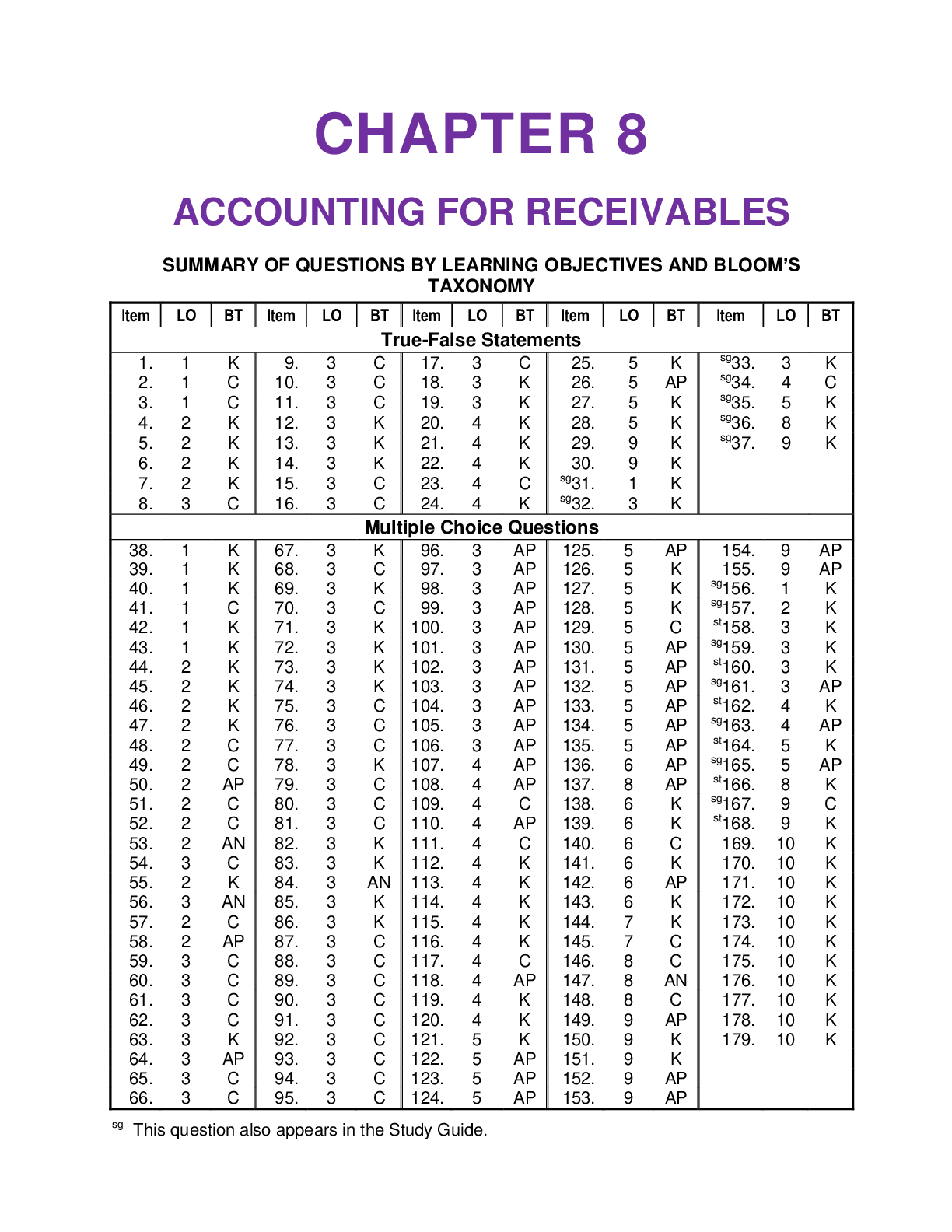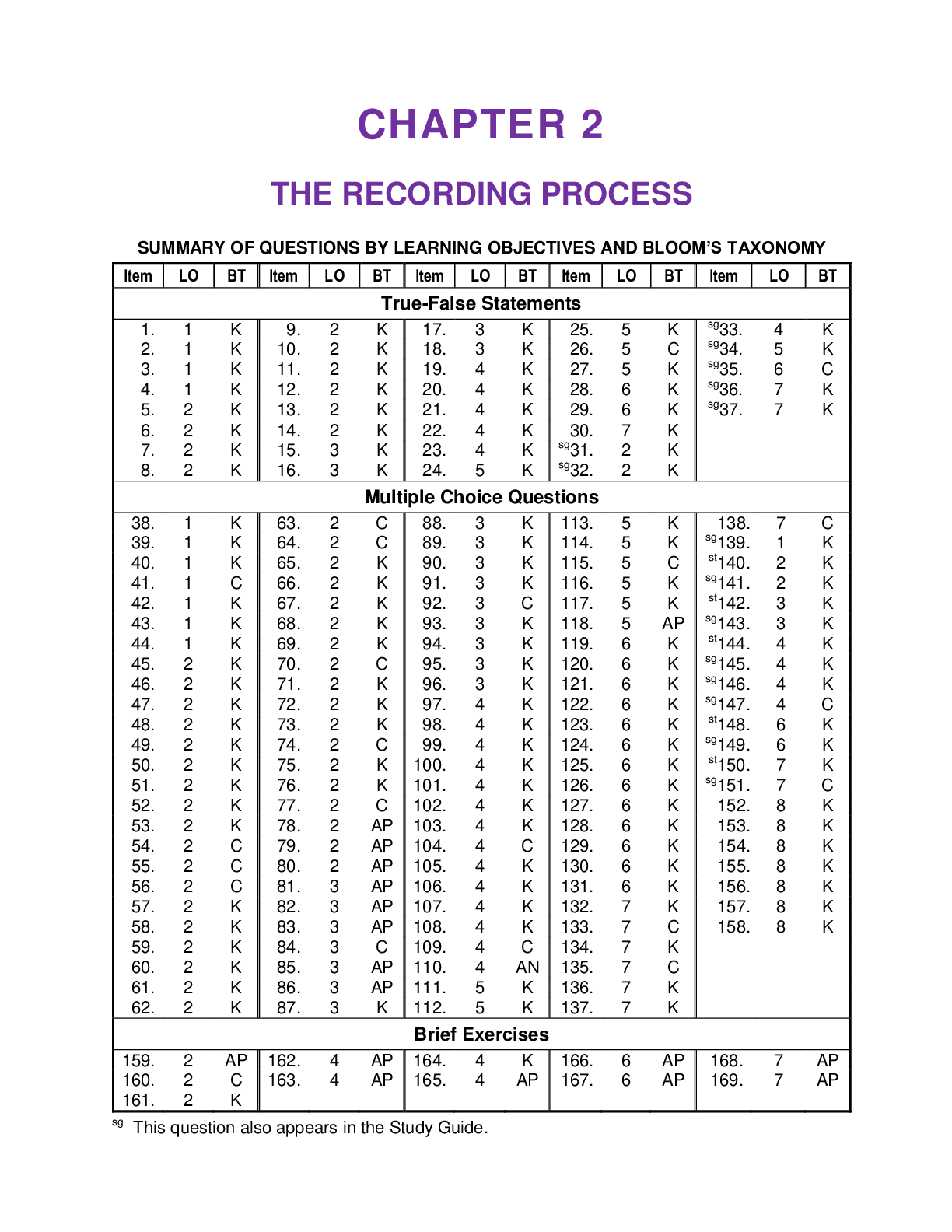Accounting > TEST BANKS > Test Bank for Accounting Principles 7th Canadian Edition, (Volume 2) 7e Weygandt Donald Kieso Kimmel (All)
Test Bank for Accounting Principles 7th Canadian Edition, (Volume 2) 7e Weygandt Donald Kieso Kimmel Trenholm Warren Novak, Answers At The End Of Each Chapter
Document Content and Description Below
Test Bank for Accounting Principles 7th Canadian Edition, (Volume 2) 7e Weygandt Donald Kieso Kimmel Trenholm Warren Novak, Answers At The End Of Each Chapter-1. Calculate the cost of property, plant,... and equipment. The cost of property, plant, and equipment includes all costs that are necessary to acquire the asset and make it ready for its intended use. All costs that benefit future periods (that is, capital expenditures) are included in the cost of the asset. When applicable, cost also includes asset retirement costs. When multiple assets are purchased in one transaction, or when an asset has significant components, the cost is allocated to each individual asset or component using their relative fair values. 2. Apply depreciation methods to property, plant, and equipment. After acquisition, assets are accounted for using the cost model or the revaluation model. Depreciation is recorded and assets are carried at cost less accumulated depreciation. Depreciation is the allocation of the cost of a long-lived asset to expense over its useful life (its service life) in a rational and systematic way. Depreciation is not a process of valuation and it does not result in an accumulation of cash. There are three commonly used depreciation methods: Effect on Annual Method Depreciation Calculation Straight-line Constant amount (Cost − residual value) ÷ estimated useful life (in years) Diminishing- Diminishing Carrying amount at balance amount beginning of year × diminishing-balance rate Units-of- Varying (Cost − residual value) ÷ production amount total estimated units-ofproduction × actual activity during the year Each method results in the same amount of depreciation over the asset’s useful life. Depreciation expense for income tax purposes is called capital cost allowance (CCA). 3. Explain the factors that cause changes in periodic depreciation and calculate revised depreciation for property, plant, and equipment. A revision to depreciation will be required if there are (a) capital expenditures during the asset’s useful life; (b) impairments in the asset’s fair value; (c) changes in the asset’s fair value when using the revaluation model; and/or (d) changes in the appropriate depreciation method, estimated useful life, or residual value. An impairment loss must be recorded if the recoverable amount is less than the carrying amount. Revisions of periodic depreciation are made in present and future periods, not retroactively. The new annual depreciation is determined by using the depreciable amount (carrying amount less the revised residual value), and the remaining useful life, at the time of the revision. 9 - 2 Exercises for Accounting Principles, Seventh Canadian Edition 4. Demonstrate how to account for property, plant, and equipment disposals. The accounting for the disposal of a piece of property, plant, or equipment through retirement or sale is as follows: (a) Update any unrecorded depreciation for partial periods since depreciation was last recorded. (b) Calculate the carrying amount (cost – accumulated depreciation). (c) Calculate any gain (proceeds > carrying amount) or loss (proceeds < carrying amount) on disposal. (d) Remove the asset and accumulated depreciation accounts at the date of disposal. Record the proceeds received and the gain or loss, if any. An exchange of assets is recorded as the purchase of a new asset and the sale of an old asset. The new asset is recorded at the fair value of the asset given up plus any cash paid (or less any cash received). The fair value of the asset given up is compared with its carrying amount to calculate the gain or loss. If the fair value of the new asset or the asset given up cannot be determined, the new long-lived asset is recorded at the carrying amount of the old asset that was given up, plus any cash paid (or less any cash received). 5. Record natural resource transactions and calculate depletion. The units-of-production method of depreciation is generally used for natural resources. The depreciable amount per unit is calculated by dividing the total depreciable amount by the number of units estimated to be in the resource. The depreciable amount per unit is multiplied by the number of units that have been extracted to determine the annual depreciation. The depreciation and any other costs to extract the resource are recorded as inventory until the resource is sold. At that time, the costs are transferred to cost of resource sold on the income statement. Revisions to depreciation will be required for capital expenditures during the asset’s useful life, for impairments, and for changes in the total estimated units of the resource. 6. Identify the basic accounting issues for intangible assets and goodwill. The accounting for tangible and intangible assets is much the same. Intangible assets are reported at cost, which includes all expenditures necessary to prepare the asset for its intended use. An intangible asset with a finite life is amortized over the shorter of its useful life and legal life, usually on a straight-line basis. The extent of the annual impairment tests depends on whether IFRS or ASPE is followed and whether the intangible asset had a finite or indefinite life. Intangible assets with indefinite lives and goodwill are not amortized and are tested at least annually for impairment. Impairment losses on goodwill are never reversed under both IFRS and ASPE. 7. Illustrate the reporting and analysis of long-lived assets. It is common for property, plant, and equipment, and natural resources to be combined in financial statements under the heading “property, plant, and equipment.” Intangible assets with finite and indefinite lives are sometimes combined under the heading “intangible assets” or are listed separately. Goodwill must be presented separately. Either on the balance sheet or in the notes, the cost of the major classes of long-lived assets is presented. Accumulated depreciation (if the asset is depreciable) and carrying amount must be disclosed either in the balance sheet or in the notes. The depreciation and amortization methods and rates, as well as the annual depreciation expense, must also be indicated. The company’s impairment policy and any impairment losses should be described and reported. Under IFRS, companies must include a reconciliation of the carrying amount at Long-Lived Assets 9 - 3 the beginning and end of the period for each class of long-lived assets and state whether the cost or revaluation model is used. The asset turnover ratio (net sales ÷ average total assets) is one measure that is used by companies to show how efficiently they are using their assets to generate sales revenue. A second ratio, return on assets (profit ÷ average total assets), calculates how profitable the company is in terms of using its assets to generate profit. [Show More]
Last updated: 4 months ago
Preview 5 out of 816 pages

Loading document previews ...
Buy this document to get the full access instantly
Instant Download Access after purchase
Buy NowInstant download
We Accept:

Reviews( 0 )
$17.50
Can't find what you want? Try our AI powered Search
Document information
Connected school, study & course
About the document
Uploaded On
Mar 10, 2025
Number of pages
816
Written in
Additional information
This document has been written for:
Uploaded
Mar 10, 2025
Downloads
0
Views
14

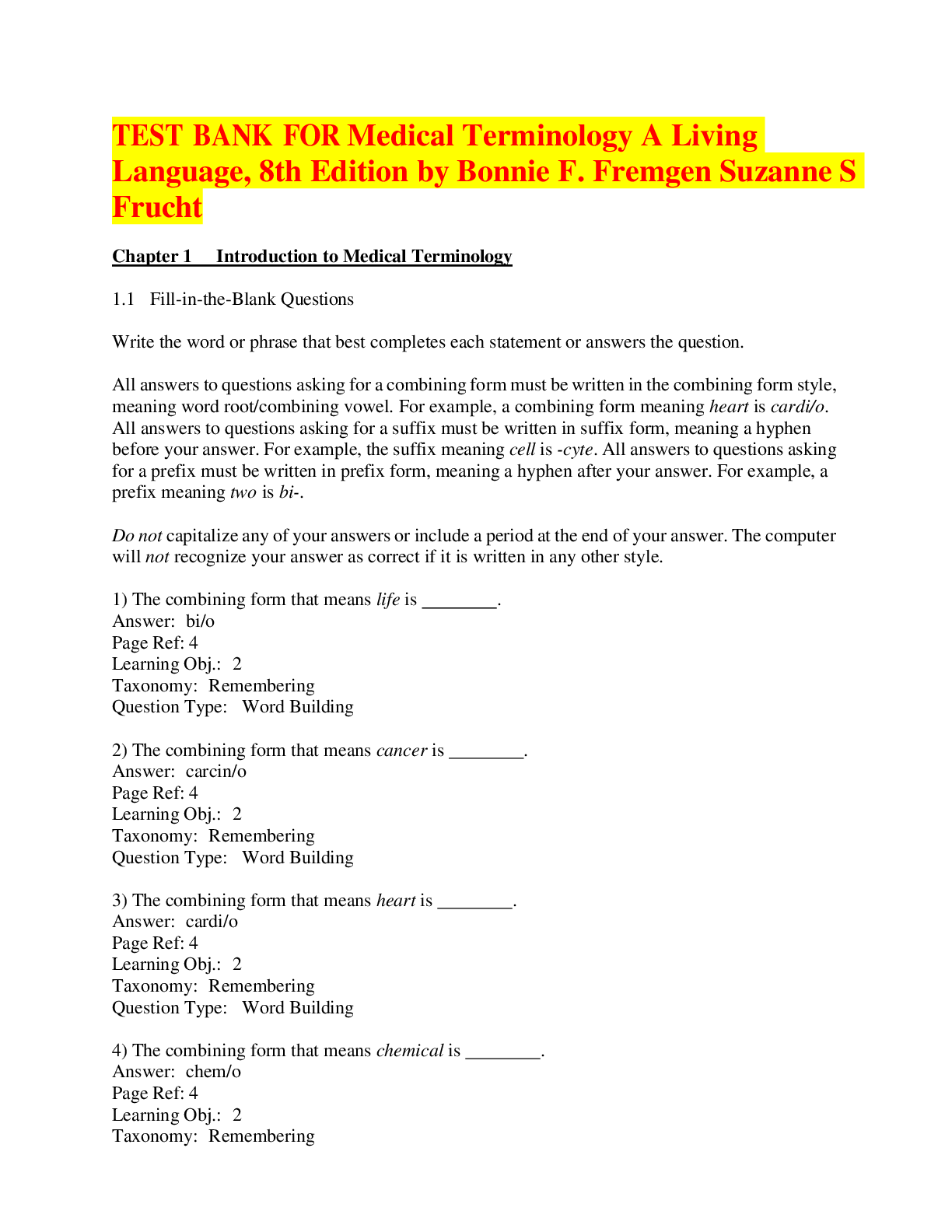
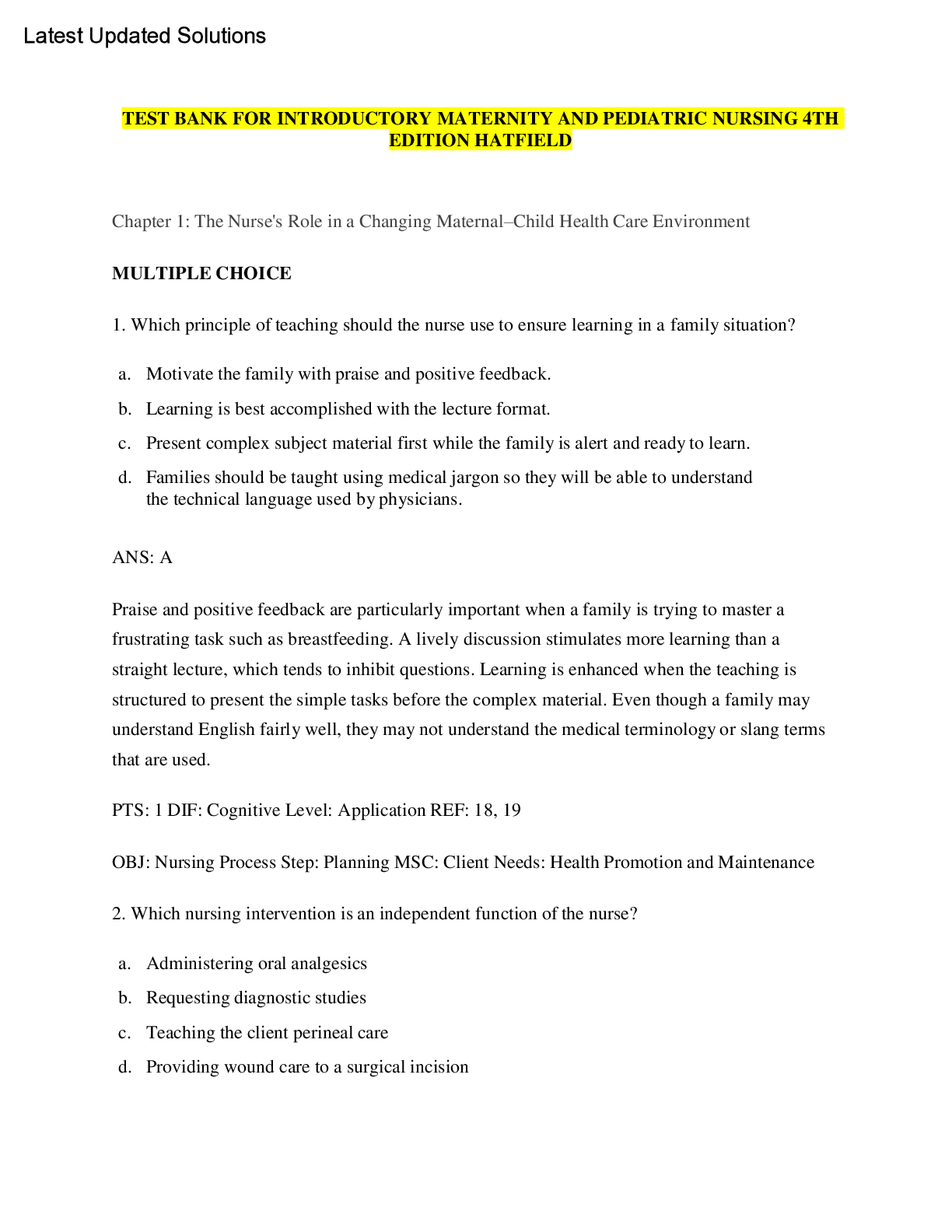



_compressed.png)
.png)
.png)

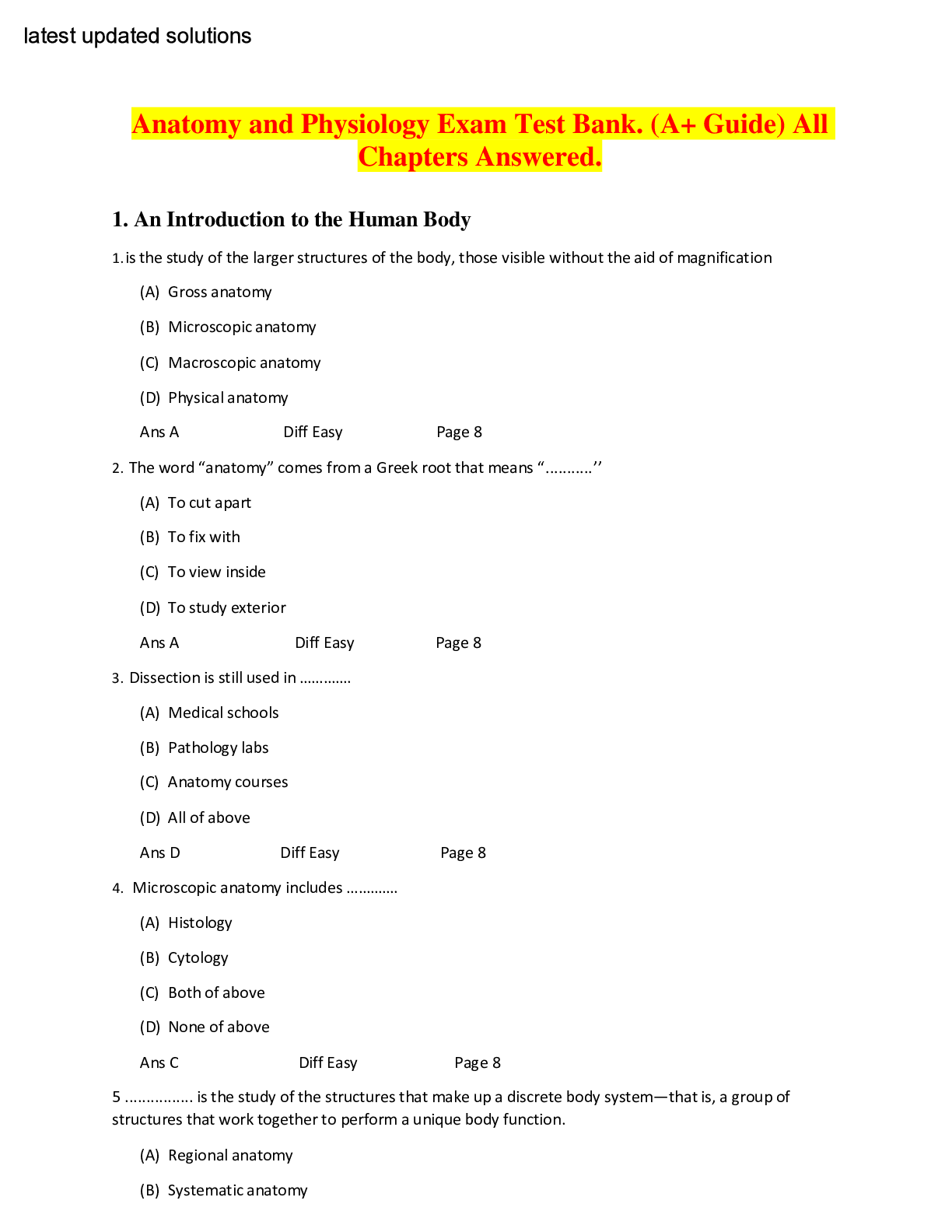
.png)
.png)

.png)


